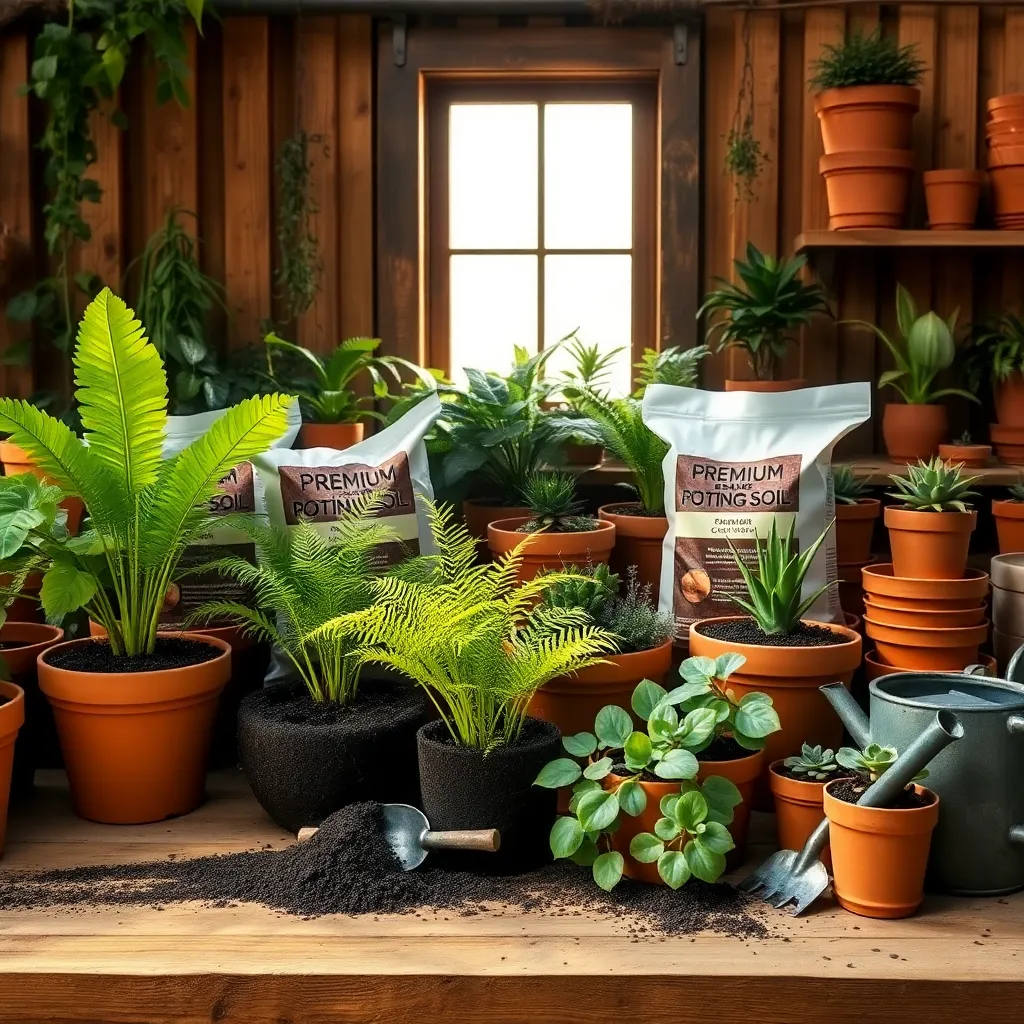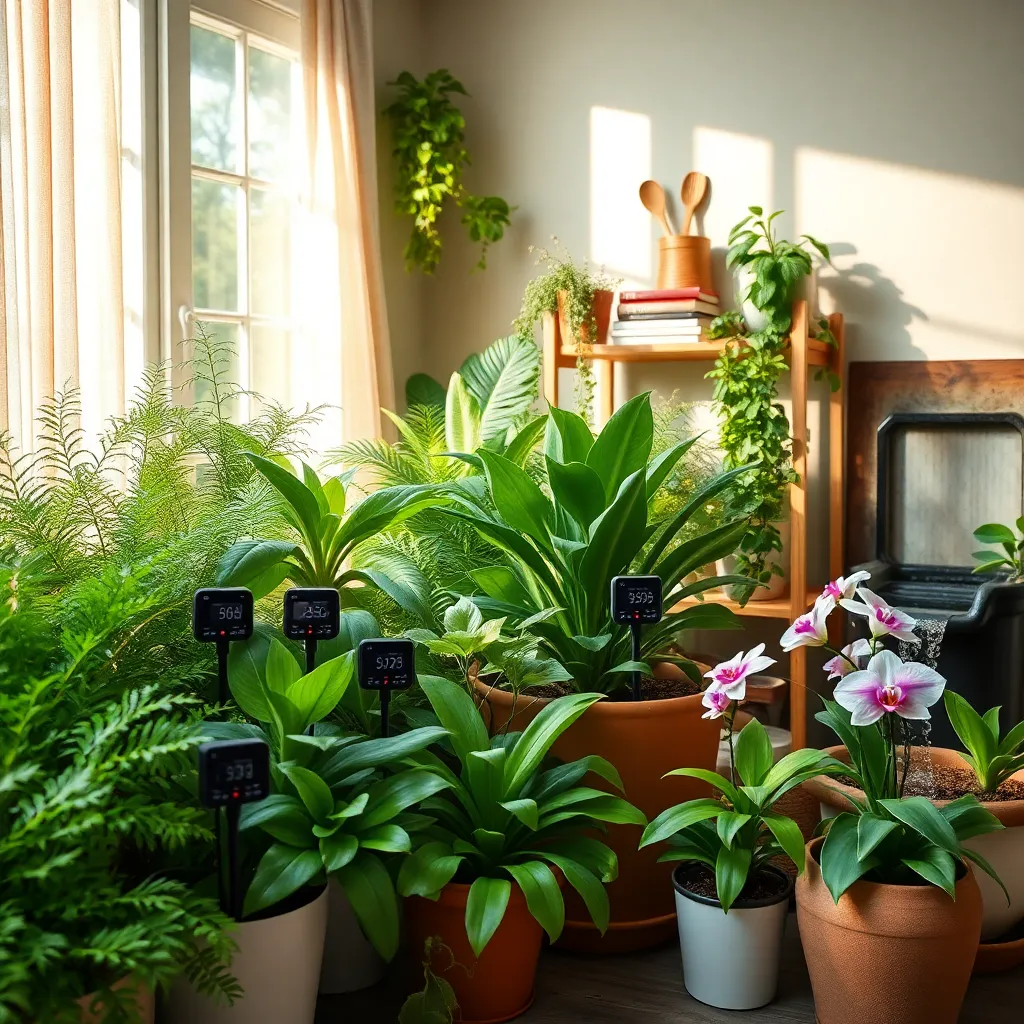Tending to indoor plants can feel like welcoming a little slice of nature into your home, transforming your space with vibrant life and color. Whether you’re a novice still figuring out the difference between a pothos and a philodendron, or a seasoned plant parent nurturing a lush indoor jungle, the right tools can make all the difference in your plant care journey.
Equipping yourself with the must-have tools for indoor plant care not only simplifies the process but also enhances your gardening experience, making it more rewarding and efficient. In this article, we’ll dive into the essentials that every indoor gardener should consider, from small hand tools to innovative gadgets that can help you monitor and maintain your green companions.
You’ll discover how these tools can streamline your routines, protect your plants from common issues, and even help you diagnose plant health with confidence. Let’s embark on this verdant adventure together, ensuring that your indoor garden thrives and brings joy to your home, no matter your level of expertise.
Essential Pruning Tools for Indoors

Pruning is an essential part of indoor plant care, and having the right tools can make all the difference. Sharp, precise tools ensure clean cuts that promote healthy growth and prevent disease in your plants.
For beginners, a pair of high-quality bypass pruners is a must-have. These pruners are ideal for making clean cuts on small branches and stems, which helps your plants maintain their shape and health.
Another valuable tool for indoor plant care is a pair of fine-tipped scissors. These are particularly useful for detail work, such as trimming leaves and stems in tight spaces, allowing you to manage more delicate plants like ferns and African violets.
Consider investing in a pruning saw if you have larger indoor plants or trees. This tool is designed to handle thicker branches that are too robust for pruners, ensuring that you can maintain your indoor trees without damaging them.
Top Watering Cans for Houseplants

When it comes to watering your houseplants, the right watering can make a significant difference. A good watering can should offer precision and control, allowing you to target the roots without drenching the leaves, which can lead to fungal issues.
Opt for a watering can with a long, narrow spout to reach the soil under dense foliage. This design helps minimize water waste and ensures that moisture reaches the roots efficiently, promoting healthier plant growth.
Consider the size of the watering can relative to your indoor garden. For a collection of small to medium-sized plants, a one to two-liter can is often sufficient, providing enough water for your needs without being cumbersome to handle.
Material choice is also essential; choose between plastic, metal, or ceramic, each with its benefits. Plastic cans are lightweight and often more affordable, while metal and ceramic options can offer a stylish touch to your indoor gardening tools.
Remember, overwatering is one of the most common mistakes in indoor plant care. Use your watering can to deliver water only when the top inch of soil feels dry to the touch, ensuring your plants receive just the right amount of hydration.
For more advanced care, consider using a watering can to apply diluted liquid fertilizer. This practice can be done every few weeks during the growing season to provide essential nutrients, supporting lush and vibrant growth.
Choosing the Perfect Potting Soil

Choosing the right potting soil is crucial for the health and growth of your indoor plants. A good potting mix should be well-draining yet retain enough moisture to keep your plants hydrated between waterings.
For beginners, it’s best to start with a general-purpose potting mix that’s suitable for most houseplants. These mixes typically contain a blend of peat moss, vermiculite, and perlite, which provide a balance of moisture retention and aeration.
More experienced gardeners might consider creating a custom mix tailored to specific plant needs. For instance, cacti and succulents thrive in a cactus mix that includes sand or grit to improve drainage, while orchids prefer a bark-based medium that mimics their natural growing conditions.
Always check the ingredients list on potting soil bags to avoid mixes with added fertilizers or chemicals that might not suit all plants. If you’re unsure, opt for an organic potting mix to minimize the risk of chemical exposure, especially for edible plants like herbs.
Lighting Accessories for Growth

Lighting is crucial for indoor plant growth, as it helps plants perform photosynthesis effectively. When natural light is insufficient, supplemental lighting becomes essential to maintain healthy plant development.
Beginner gardeners can start with LED grow lights, which are energy-efficient and have a long lifespan. These lights emit minimal heat, reducing the risk of damaging delicate plant leaves.
For more advanced setups, consider using full-spectrum fluorescent lights, which mimic natural sunlight closely. These are ideal for plants that require a more balanced light spectrum to thrive.
Position your lights at the correct distance from your plants to avoid leaf burn while ensuring adequate light exposure. A good rule of thumb is to place lights about 12 to 24 inches above the plants, adjusting as needed based on plant type and growth stage.
Humidity Monitors and Their Benefits

Humidity monitors are essential tools for maintaining the ideal environment for indoor plants, as many species thrive in specific humidity ranges. By using a humidity monitor, you can ensure that your plants are getting the right amount of moisture in the air, which is crucial for their health and growth.
When the air is too dry, many plants, particularly tropical species, can suffer from brown leaf tips and reduced growth. A humidity monitor helps you keep track of your indoor environment, allowing you to take action such as misting your plants or using a humidifier when necessary.
For beginners, a basic digital humidity monitor is a great starting point, offering easy-to-read displays and affordable prices. More advanced gardeners might opt for monitors with additional features like temperature readings and data logging, which can help in fine-tuning plant care.
Humidity levels can fluctuate throughout the day, so it’s beneficial to place your monitor near your plants for the most accurate readings. Consistent monitoring allows you to quickly adapt your care routine, ensuring that your plants remain vibrant and healthy.
Conclusion: Growing Success with These Plants
In nurturing both your indoor plants and relationships, the right tools make all the difference. We’ve explored five key concepts: effective communication for understanding plant needs, patience as plants and relationships grow at their own pace, commitment to routine care, adaptability to change, and the nurturing power of appreciation. These principles not only help your indoor garden thrive but also strengthen your personal connections.
As an actionable next step, choose one of these concepts to focus on this week. Whether it’s setting aside time to communicate more openly or adapting to changes with grace, begin integrating these tools into your daily routine. Remember, small, consistent efforts lead to flourishing relationships.
Don’t let these valuable insights slip away. Bookmark this article to revisit these concepts whenever you need a gentle reminder of how to tend to your relationships with care and dedication.
Looking forward, by investing in these practices, you’ll cultivate not just a thriving indoor garden but also a network of deeply rooted, resilient relationships. Embrace the journey, knowing each step brings you closer to a more fulfilling and connected life.

